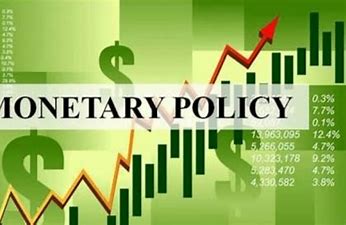In minutes of last meeting, Monetary Policy Committee members stated that domestic and international conditions require even greater caution in conducting monetary policy
06/08/2024
/i.s3.glbimg.com/v1/AUTH_37554604729d4b2f9f3eb9ad8a691345/internal_photos/bs/2023/M/m/vB7rixQ4KBEvG7jx7Ahg/53025374590-b027ffe2a9-o.jpg)
Central Bank’s building in Brasília — Foto: Raphael Ribeiro/BCB
Central Bank’s Monetary Policy Committee reported in minutes released this Tuesday that its members agreed “that there are more upward risks for inflation, with several members emphasizing the asymmetry of the risk balance.” The COPOM, as the committee is known, also reinforced that it will not hesitate to raise interest rates to ensure convergence of inflation to the target if deemed appropriate. Last week, it maintained interest rates at 10.5% per year.
The information about the increased upward risks for inflation is included in the part of the minutes that details the risk balance, that is, the group of factors that could potentially cause inflation to exceed or fall below the 3.2% projected for the 12-month period ending in March 2026. The minutes again list the factors that had been anticipated in last week’s statement.
The minutes cite three factors that could accelerate inflation: “a de-anchoring of inflation expectations over a more prolonged period; “a greater resilience in service inflation than projected due to a tighter output gap”; and “a combination of external and internal economic policies that have inflationary impacts, for example, through a persistently depreciated exchange rate.”
On the deflationary side, there are two factors: “a sharper global economic activity slowdown than projected”; and “the impacts of monetary tightening on global disinflation proving to be stronger than expected.”
Domestic and international scenarios
The COPOM assesses that domestic and international conditions require even greater caution in conducting monetary policy. “In particular, the inflationary impacts arising from movements in market variables and inflation expectations, if they prove to be persistent, corroborate the need for greater vigilance,” the minutes state.
In the document, the COPOM cited surprises in economic activity, an increase in the inflation projection, a rise in inflation expectations, and an adverse international scenario.
“In the domestic scenario, the labor market and economic activity, especially household consumption, have surprised and diverged from the projected slowdown,” the minutes state.
“There has been a new increase in inflation projections for the relevant monetary policy horizon, notwithstanding a new increase in the trajectory of the Selic rate drawn from the Focus survey,” the document states, citing Central Bank’s weekly survey with analysts. “Similarly, inflation expectations have shown additional de-anchoring since the previous meeting.”
According to the COPOM, inflation data “suggest a trajectory that has not diverged significantly from what was expected, but there is a noticeable cooling in the disinflation process in the more recent period.”
The document further states that the inflation rates of industrial goods and food at home have maintained their recent trajectories and have ceased to contribute to disinflation at this stage. Service inflation, it continues, “which has greater inertia, plays a predominant role in the disinflationary dynamics at the current stage.”
The minutes indicate that the COPOM also discussed the role of labor market dynamics and inflation expectations in determining service inflation. “It was concluded that the disinflationary process has lost steam and that current inflation levels above the target, in the context of dynamic economic activity, make the convergence of inflation to the target more challenging,” the minutes state.
The COPOM also emphasized that “the unfolding of the scenario will be particularly important to define the next steps of monetary policy,” citing the hypotheses of maintaining interest rates or tightening the Selic rate.
“The Committee will evaluate the best strategy: on one hand, whether the strategy of maintaining the interest rate for a sufficiently long time will lead inflation to the target in the relevant horizon; on the other hand, the Committee unanimously reinforced that it will not hesitate to raise the interest rate to ensure the convergence of inflation to the target if deemed appropriate,” the document states.
According to the unanimous assessment of the COPOM, “the current moment is one of even greater caution and diligent monitoring of the determinants of inflation, without committing to future strategies.”
“The scenario marked by higher projections and more risks for inflation increase is challenging, and the Committee assesses that the unfolding of the scenario will be particularly important to define the next steps of monetary policy,” the minutes state.
The COPOM asserts that, as usual, the strategies adopted by the Committee will reflect the commitment to meet the inflation target, also aiming for the re-anchoring of inflation expectations in order to minimize the cost of disinflation. “The Committee will remain vigilant and recalls that any future adjustments in the interest rate will be dictated by the firm commitment to the convergence of inflation to the target,” the minutes state.
Relevant horizon
The minutes from the last COPOM meeting pointed out that the projection for the relevant horizon of monetary policy “is above the inflation target of 3%.” The horizon is six quarters ahead, therefore, the first quarter of 2026.
According to the committee, the usual understanding was maintained, “without any alteration,” that the relevant horizon is six quarters ahead.
The document indicates that in the reference scenario, which considers the Selic drawn from the Focus survey, the accumulated projection for the relevant horizon is 3.4%. In the alternative scenario, which considers a constant interest rate, the number is 3.2%.
According to the minutes, the committee opted to communicate these projections, in addition to the traditional ones made for calendar years, to contribute “to transparency in the communication of monetary policy.” According to the COPOM, this decision is in line with the continuous target system established at 3% starting in 2025.
For calendar years, the COPOM’s projections in the reference scenario were 4.2% in 2024 and 3.6% in 2025. For administered prices, it reached 5% in 2024 and 4% in 2025. In the alternative scenario, the projection for 2024 was 4.2% and for 2025 was 3.4%.
*Por Alex Ribeiro, Gabriel Shinohara — São Paulo and Brasília
Source: Valor International

